#Eastern Marsh Harrier
Text

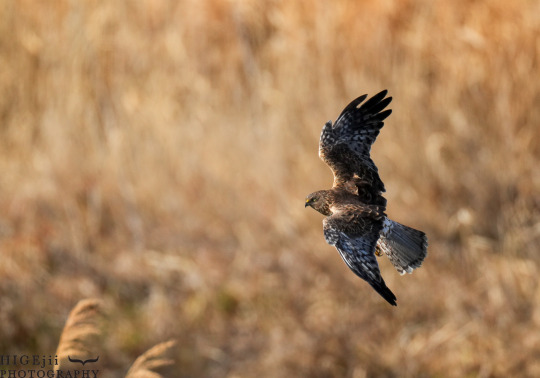
チュウヒ 2023.01.03
10 notes
·
View notes
Text
Birds of Doriath (non Songbirds)
I have songbirds of Doriath here and my masterlist of environmental world building here!
Doriath is a region made up of a variety of forests. There is Region, a forest of holly and other mostly deciduous trees, Neldoreth, an ancient beechwood, Nivrim, a forest of primarily oak north of the twilit meres and finally Arthórien, a forest we have almost no information on, divided from the rest of the kingdom by the river Aros which runs along the Eastern border of greater Doriath.
Greater Doriath (Region and Neldoreth): black billed cuckoo, tawny owl, barn owl and subspecies, goshawk, sparrow hawk, wood grouse, common quail, common swift, moorhen (also found in Nivrim), little curlew, red kites, black woodpecker, green woodpecker, hoopoe (in clearings, glades and outskirts),
Nivrim and the twilit Meres: Barrow’s golden eye, ural owl and ural owl subspecies, northern hawk owl, wood duck, water rail, spotted crake, black stork, common golden eye, horned grebe, marsh harrier, tree kingfishers, merlin
Arthórien (markedly different climate): hill partridge, emerald dove, great eared nightjar, kiwi species, black wood pigeon, rain quail, grey headed woodpecker, Japanese scops owl, grass owl, white backed woodpecker, green pigeon, greater painted snipe (I’ll probably make a more thorough post for this entirely)
World building notes:
I’ve talked about this before but common and rain quails are domesticated for their eggs and meat, primarily by the marchwardens! There are little enclosures built in strategic locations between the temporary huts the marchwardens use between scouting and other missions. There are elves, usually younger ones who might be training as a scout or warden, who care full time for the birds. The quails live good long lives and are often named by their keepers. While in Doriath, Túrin saved four quails from being eaten out of spite
Nightjars and owls are considered sacred to the Silvan of Doriath who reside in Arthórien and appear frequently in song and folklore.
Water birds are most commonly found in Nivrim where ponds and marshlands make up part of the ecosystem. Their images appear upon the walls of Menengroth in the passages beneath the river.
Though birds of prey are not reviled by any means, depictions of the deaths of elves in battle or through other violent means are commonly represented as birds of prey killing songbirds
19 notes
·
View notes
Text
MSB rambles: locations
As anyone who’s watched the Magic School Bus series knows, the show is mostly set in Walkerville, a made-up town. However, they never specify where it is, except for “in the USA.” They don’t specify what state, or even what region of the country it’s in. But here are my observations.
In “Gets Eaten,” Ms. Frizzle drives the class to the beach, while the bus is in normal bus mode. The beach looks like a California beach to me (based on my experience going to beaches there), and a sea otter makes a brief appearance. In the US, sea otters are only found along the west coast.
In a few episodes (Getting Energized, Rocks and Rolls, etc…), it’s shown that there are mountains/foothills just outside Walkerville, and that there’s snow on top for at least part of the year.
We know it snows during the winter in town as well. (Source: MSB Holiday Special)
There is a swamp with alligators and blue jays within driving distance of town, as shown in “Butterfly and the Bog Beast.” The whole vibe of the swamp feels very southern to me. (Note: “driving distance” might not necessarily mean said swamp is near town. Could just be that anywhere is driving distance on the Magic School Bus.)
In “Gets Swamped” we see that there is a more marshy swamp in town. The main vegetation is reeds and small shrubs, and the animal life consists of species such as snapping turtles, muskrats, wood ducks, harriers (marsh hawks), bullfrogs, red-winged blackbirds, and dragonflies. This suggests a more northern location for Walkerville.
In “Goes to Mussel Beach,” the mussels are described as “Mytilus californianus” aka the California Mussel, a species only found along the west coast. Again, we have no idea how far away the beach is from town, but it’s a different beach than the one in “Gets Eaten.”
In “Kicks Up a Storm” the outside temperature gets to a high of 99 degrees Fahrenheit— which, judging by the kids’ reactions, is too hot for them. As a Californian, I can sympathize with this.
In “All Dried Up,” the bus (in plane mode) must fly over a mountain range to get to what looks like the Sonoran Desert. Which mountain range they fly over is not specified.
In the book “The Truth About Bats,” it is stated that in order to see bats in Yosemite National Park, the class must fly to California— thus implying that Walkerville is not located in my home state.
In “Goes to Seed,” there is a Ruby-throated hummingbird (at least that’s what I think it is) in the garden at Phoebe’s old school. The Ruby-throated hummingbird lives mainly in the eastern half of the US.
In “In a Beehive,” Tim mentions a “big frost” approaching. Again, this suggests Walkerville is somewhere Up North. (We don’t get a “big frost” where I live— just a few smaller frosts.)
In “In the City,” we see that some of Walkerville’s urban wildlife includes peregrine falcons, red foxes, opossums, raccoons, and nighthawks. It is also implied that bears live in the woods outside of town.
In the book “The Wild Whale Watch,” the New England coast is a short drive from school, which directly contradicts my observations about coastal locations in the show.
The woodpecker in “Meets the Rot Squad” is a red-bellied woodpecker, a species found in the eastern US.
In the book “Rocky Road Trip,” Carlos says that he collected some of the rocks in his collection near “the Saddle River.” I looked it up, and in the real world, Saddle River runs through New York and New Jersey. (But for all we know, the Saddle River in the book could be made up just like Walkerville.)
In “Ups and Downs,” we see that Walkerville is located near a good-sized lake— large and deep enough for a submarine to dive in, and with plenty of underwater vegetation.
In terms of continuity, there is no continuity when it comes to where the heck Walkerville is. This sometimes frustrates my overanalytical brain. So, I leave it to you, fellow Magic School Bus fans, to answer the question:

Map for reference!
13 notes
·
View notes
Text
About Sunderbans National Park
Information About Sunderbans National Park, India
Covering an expanse of approximately 10,000 square kilometers, the Sundarbans forest spans across both India and Bangladesh. India claims around 4,262 square kilometers of this natural marvel, while the rest falls within Bangladesh's territory. Sundarbans National Park occupies the Indian portion, renowned globally for hosting the largest mangrove forest on the planet. This national park is a haven for nature enthusiasts and wildlife aficionados alike. With its thick mangrove cover, intricate network of river channels, picturesque estuaries, and a thriving population of Royal Bengal Tigers and various other wildlife species, the Sundarbans offers a captivating landscape that beckons visitors from far and wide. Recognized as a UNESCO World Heritage Site, the park possesses a unique allure that draws tourists seeking unparalleled natural beauty and biodiversity experiences.
Located at the southeastern edge of the 24 Paraganas district in West Bengal, India, the Sundarbans National Park derives its name from the Sundari mangrove plant (Heritiera Minor). Situated within the world's largest delta formed by the Ganges, Brahmaputra, and Meghna rivers, this national park covers an expansive area of approximately 2585 square kilometers, making it India's largest national park and tiger reserve. The Sundarbans region encompasses around 2125 square kilometers of mangrove forest, while the remaining area, spread across 56 islands, is dominated by water bodies, totaling 4262 square kilometers.
Flora in Sundarbans National Park:
The Sundarbans, renowned as the largest mangrove forest globally, boasts the mangrove tree as its flagship species, thriving uniquely in its waterlogged terrain. With remarkable adaptability, these trees endure prolonged inundation by sending up spikes from their roots, aiding respiration and providing structural support to the mangrove ecosystem. Among its diverse array of flora, the Sundarbans is home to the 'Sundari' mangrove, a distinctive variety that dominates the landscape and lends its name to the forest. Encompassing over 300 plant species, the Sundarbans region harbors a rich botanical tapestry.
Fauna in Sundarbans National Park:
The Sundarbans National Park, dominated by the majestic Royal Bengal Tigers, reigns supreme as the apex predator with a population exceeding 400 individuals. These iconic tigers exhibit remarkable swimming prowess in the park's salty waters and are notorious for their occasional predation on humans. While tourists flock to catch a glimpse of these striped wonders, the park harbors a diverse array of fauna that equally captivates wildlife enthusiasts.
In addition to the Bengal Tigers, Sundarbans teems with captivating wildlife such as Fishing Cats, Leopards, Macaques, Wild Boars, Wild Buffaloes, Rhinoceroses, Indian Mongooses, Jungle Cats, Foxes, Flying Foxes, Pangolins, Barking Deer, Spotted Deer, Hog Deer, and Chitals. The park is also home to saltwater crocodiles and various snake species, adding to its rich biodiversity.
Moreover, Sundarbans boasts a vibrant avian population, featuring a kaleidoscope of exotic birds. Among them are Openbill Storks, Black-capped Kingfishers, Black-headed Ibises, Coots, Water Hens, Pheasant-tailed Jacanas, Brahminy Kites, Pariah Kites, Marsh Harriers, Swamp Partridges, Red Junglefowl, Spotted Doves, Common Mynahs, Jungle Crows, Jungle Babblers, Cotton Teals, Herring Gulls, Caspian Terns, Gray Herons, Common Snipes, Wood Sandpipers, Green Pigeons, Rose-ringed Parakeets, Paradise-flycatchers, Cormorants, Grey-headed Fish Eagles, White-bellied Sea Eagles, Seagulls, Common Kingfishers, Peregrine Falcons, Woodpeckers, Whimbrels, Black-tailed Godwits, Little Stints, Eastern Knots, Curlews, Golden Plovers, Northern Pintails, White-eyed Pochards, and Whistling Teals. These avian residents contribute to the park's enchanting atmosphere, making it a paradise for birdwatchers and nature lovers alike.
Climate of Sundarbans National Park:
The climate in the Sunderbans forest is generally temperate and pleasant, with temperatures ranging from 20 to 48 degrees Celsius. Due to its proximity to the Bay of Bengal, humidity levels are consistently high, averaging around 80%, and heavy rainfall is common. The summer season, lasting from March to May, is characterized by hot and humid weather. Monsoon conditions prevail from mid-May to mid-September, marked by increased humidity and windy conditions. The region frequently experiences storms, particularly in May and October, which can escalate into cyclones. Winter sets in from October to February, bringing colder temperatures to the area.
2 notes
·
View notes
Photo

A new variant has been added!
Western Marsh Harrier (Circus aeruginosus)
© Archibald Thorburn
It hatches from brown, creamy, dark, discrete, eastern, extensive, local, long, low, narrow, overall, pale, rusty, shallow, similar, variable, and white eggs.
squawkoverflow - the ultimate bird collecting game
🥚 hatch ❤️ collect 🤝 connect
0 notes
Photo

チュウヒ 成鳥
Circus spilonotus Adult

チュウヒ 成鳥
Circus spilonotus Adult

チュウヒ
Circus spilonotus
2019.11.19
茨城県
14 notes
·
View notes
Photo

チュウヒ
Eastern marsh harrier
11 notes
·
View notes
Photo




葦原のチュウヒ
一週間以上天気の悪い日が続いて天気が回復して3日・・・溜まってた欲求から良いものを撮りたいと思ってたら、全くの空回りで何も撮れず・・・・鳥運が下がってしまったのかも?と思い初心に戻って何時も通りにしてみたら楽しく写真が撮れ、運が戻ってきたのかチュウヒに会えた!かなり遠くだったけど・・・・
全然飛ばなくて同じ所にとまってたんだけど、飛んでしばらくしてまた低い木にとまって結局、日が落ちてきたので退散。長く楽しめたけど、なんかずっとあっちを向いてたまにこっちを見るくらいだった。・・・あれ?遠すぎてわからなかったけど尾羽根が2つある様な・・・・。もう1羽いたのかも・・・
チュウヒは大陸型とか国内型とか個体差とか色々あるみたいだけど一応メモ@wiki
オスは全長48cm。メスは58cm。メスの方が大型になる。体色は地域や個体による変異が大きい。オスは頭部、背面、雨覆、初列風切羽の先端は黒い。腹部の羽毛は白い。尾羽の背面(上尾筒)には白い斑紋がある。メスや幼鳥は全身が褐色の羽毛に覆われる。腹面は淡褐色で褐色の斑紋が入る。
7 notes
·
View notes
Text
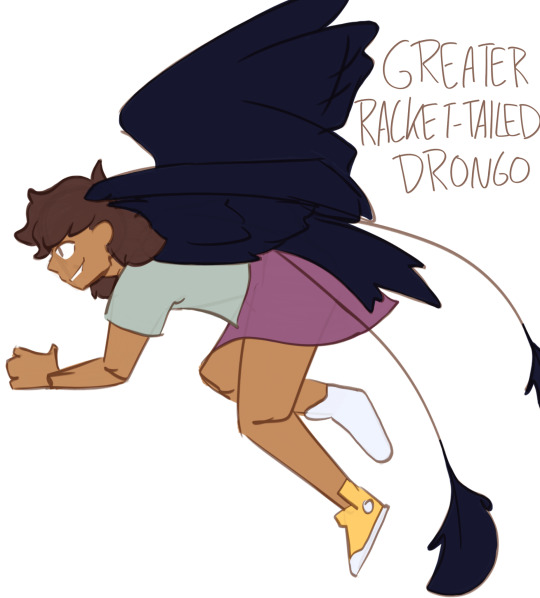
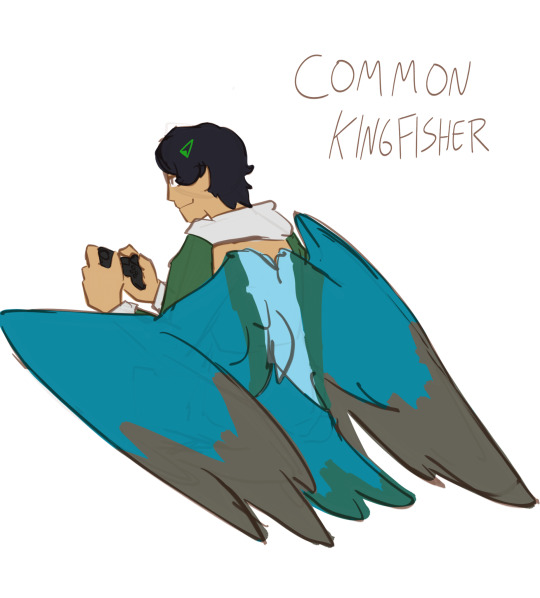
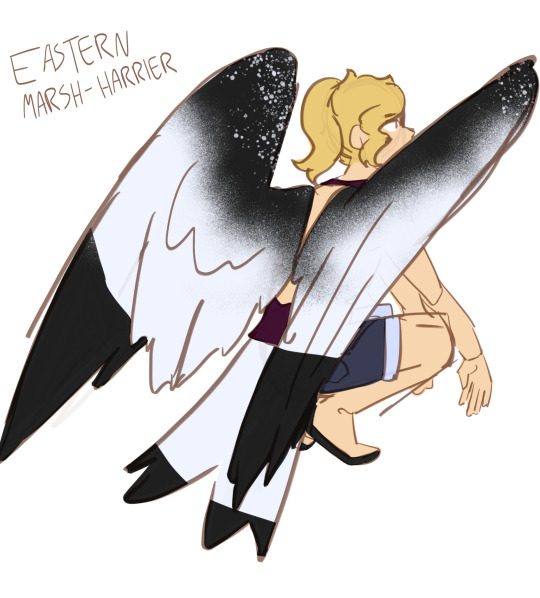

its MY turn on the wing au besties >:3
#my art#amphibia#amphibia fanart#anne boonchuy#sasha waybright#marcy wu#amphibia wing au#thinks VERY hard about my two hyperfixations#birds and frog show#anyway Anne’s bird is native to thailand#common kingfishers frequent Taiwan#eastern marsh harriers are native to Russia because I see that pop up a lot for Sasha#anyway#gay bird people <3#greater racket tailed drongos have these cool tail feathers that are just so fun to draw#also#calamity glowy powers plus wings?#V I B E S#forgot sashas scar like a dumb fuck but shhhhhh it’s fine#FinchDoodles
71 notes
·
View notes
Photo

مرزة المستنقعات أو مرزة البطائح (الاسم العلمي: Circus aeruginosus) (بالإنجليزية: Western Marsh Harrier) هو طائر جارح ينتمي إلى البازية (فصيلة: Accipitridae) ويوجد في منطقة مناخ معتدل و شبه الاستوائية غرب أوراسيا المتاخمة لافريقيا. طائر مرزة المستنقع يتراوح طوله ما بين 48 الى 56سنتمترا و طول جناحيه ما بين 120 إلى 135 سنتمترا أما الوزن فيتراوح ما بين 500 إلى 800 غرام بالنسبة للإناث و ما بين 400 إلى 650 غرام بالنسبة للذكور. و يفضل الأهوار و حواف البحيرات والأنهار الكبيرة. كما انه يعشش في مستنقعات القصب. تضع الأنثى ما بين 3 الى 8 بيضات الحضانة تستمر ما بين 33و 38 يومايتغذى الثدييات المائية الصغيرة؛ و الطير المائي وغيرها من الطيور الدجاج الماء وبيضها، والضفادع و الثعابين والحشرات والجيف . ============ @boyahia ============ The western marsh harrier (Circus aeruginosus) is a large harrier, a bird of prey from temperate and subtropical western Eurasia and adjacent Africa. It is also known as the Eurasian marsh harrier. Formerly, a number of relatives were included in C. aeruginosus, which was then known as "marsh harrier". The related taxa are now generally considered to be separate species: the eastern marsh harrier (C. spilonotus) and the possibly distinct Papuan harrier (C. (s.) spilothorax) of eastern Asia and the Wallacea, the swamp harrier (C. approximans) of Australasia and the Madagascar marsh harrier (C. maillardi) of the western Indian Ocean islands. The western marsh harrier is often divided into two subspecies, the widely migratory C. a. aeruginosus which is found across most of its range, and C. a. harterti which is resident all-year in north-west Africa. (at محمية شرق الجهراء للطيور) https://www.instagram.com/p/CdswysZKBos/?igshid=NGJjMDIxMWI=
4 notes
·
View notes
Text

チュウヒ 2022.11.13
5 notes
·
View notes
Text
revice: their feathers were soft
daiji/ikki
daemon au where people's souls are in the shapes of animals
notes: y'all have to use google for this
daiji drove as the sun was starting to set. there was figure flying above him and he could feel a light pull but that didn't worry him. kasumi wouldn't and couldn't go far. he stopped the bike in front of the bathhouse, pushing the kickstand down.
he took off the helmet then got off the bike. he looked at the sky. there was a bird. daiji lifted a hand, curling his fingers. it swooped down and it landed on his fingers. it was a bird with a hooked beak, the feathers around its neck white and the rest in various shades of brown. a shape of a eastern marsh-harrier. daiji lowered his hands.
kasumi looked at him, its eyes were bright gold. daiji met his eyes. 'come on! get in already!' kasumi said impatiently.
the edges of daiji's lips quirked up. 'why are you so impatient? you're gonna see them very soon.'
'but i'd see them sooner if you'd hurry up!' kasumi answered. daiji smiled. he went into the bathhouse, his helmet under his other hand. 'we're home!' kasumi called out.
'welcome back!' a voice rang out. daiji lifted his hand in a throwing motion. kasumi flapped his wings then spread them. he pushed himself off daiji's hand. daiji bent down to take off his shoes.
when he finished, he straightened and went to the counter. there was a small cushion on it and kasumi was sitting on it, another bird beside him. it was small bird with small beak, in white and also in various shades of brown, in the shape of a japanese quail. they turned their head and black eyes looked up at daiji. 'welcome home, daiji!' jiu said warmly, as to be expected of ikki's daemon.
daiji's smile widened. he took off his gloves and put them in his pocket. he leaned against the counter. jiu stood up, kasumi made a soundof protest. jiu walked off the cushion and towards him. daiji reached down. jiu pushed their head against daiji's hand and daiji ran a finger down their back. their feathers were soft. jiu's eyes closed, pleased. daiji's smile turned soft. 'kasumi didn't bother did you, did he?' he asked playfully.
kasumi puffed up. 'i didn't!'
jiu giggled. 'he didn't!'
'i'm just happy to see him!' kasumi protested.
'i'm happy to see you too!' jiu said happily. daiji moved his hand away and kasumi hopped off the cushion. he went to jiu. he herded them back to the cushion. daiji's smile widened and he shook his head. jiu sat down on the cushion and kasumi sat down next to them. daiji went to his room to change.
daiji sat down on the sofa, extending his legs. he leaned back and watched. it was past dinner time and the bathhouse was closed so jiu took the time to walk around. they walked across the floor while kasumi watched on the counter ledge.
kasumi had been protective of jiu lately, circled them with a watchful eyes and tried his best to shield them. it was confusing but it didn't bother daiji now. it was comforting that kasumi cared for jiu so much.
daiji turned to kasumi. 'you can relax you know,' jiu jumped, 'sorry, nothing's gonna happen to them here,' he called out.
'it's fine, you just surprised me that's all,' jiu responded.
'i know that,' kasumi said in a huff, 'but i'm still gonna do it anyway!'
jiu giggled. they changed direction, walking towards daiji. 'you have a lot of patience to deal with him,' daiji mused.
'hey!' kasumi muttered.
'it's nothing like that, nothing to do with patience. he worries so i just want him to not worry to much,' jiu answered. they stopped by one of daiji's legs. daiji leaned down. he picked jiu up, curling his hands around them carefully.
daiji didn't want to hurt them. he felt jiu's chest moves as they breathed. he didn't want to hurt jiu, not only because the mere of thought of them was painful but also because hurting jiu would hurt ikki too. the connection between person and daemon was like that.
kasumi pushed himself off the counter. he glided across the room. he landed on the coffee table. daiji leaned back, settling into the sofa. he cradled jiu to his chest.
5 notes
·
View notes
Photo

Sunset on the lake side with Eastern marsh harrier Circus spilonotus flying.
Saitama Pref.
チュウヒ(沢鵟/宙飛)の舞う湖畔の夕暮れ
埼玉県
6 notes
·
View notes
Photo
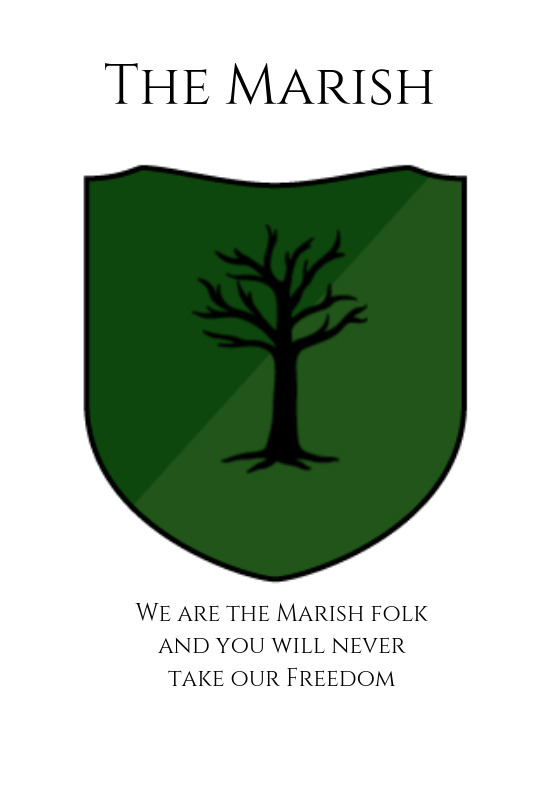
Worldbuilding Post: The Marish
The Marish is the second largest region in the Barliosian Empire and is the home to towering oak and conifer forests, marshlands, the Northern Mountains and the Twelve Tribes. The people who live there usually associate with one of the twelve tribes, which normally remain in a constant state of terse peace, while some are definitely more closely allied than others.
There are a few rules that every clan must follow:
A young adult must be blooded (Accepted into a clan) before the eve of their 19th birthday
When marrying outside the tribes, the outsider must be blooded.
When a chief is elected, they must take the name of the tribe as their own.
You don’t talk about the lost clan of the Draga to outsiders.
Don’t steal each other’s kids.
Bjarnson: Children of Bears
A stationary tribe that lived in Camelios, the Bjarnson clan is run by a chief and his tribunal of five Elders. (Two men, two Women and one Sorceror) They're warriors and hunters, as well as distillers, producing much of the mead, beer and whiskey that is enjoyed all over the Marish and the rest of the empire. Their line of chiefs is one of the few unbroken family lines in the Marish.
Their chiefs can access the power of berserking to protect their clans.
Current Chief: Allistor Bjarnson
Canidottir: Daughters of Wolves
They're nomads with really, really fucking big dogs and only female chiefs, but they're more democratic than not. Every full moon, they'll gather and have a discussion on where the tribe is supposed to go next.
And the chiefs all have lycanthropy, which, like the berserking, they can tap into when they absolutely have to.
Current Chief: Luna Canidottir
Delphinae: The Tricky Clan
The Delphinae are a clan of fishermen and women, usually led by an elected sorceress. They are known as the Raider Clan, the Tricky Clan and usually turn to piracy when times are lean. Rather than living on land, they live in a bay on a series of man-made islands that they can detach from each other and go floating around it.
Current Sorceress: Mara Delphinae
Corvinus: Flap-Flap Tribe
The Corvinus is a nomadic tribe that mostly lives on the steppes before the northern mountains. They raise sheep and use birds to pass along messages. They are the only tribe besides the Bjarnson to use hair beads. They make tapestries and hang them in random trees to scare people away. They are ruled by two chieftains, one male, and one female.
Curtain Chiefs: Isel and Francis Corvinus
Catamount: The Bold Children of the Lion:
This tribe lives in Epidamnos and are the technical rulers of the twelve tribes. They originally were stonemasons and bonded quite well with the dwarves of the Eastern Hills, allowing them to build the dyke that keeps Epidamnos from flooding each year. They’re lead by an elected chief, who reports to the regent from the Empire.
Current Chief: Gaston Catamount
Pronx: The Wild Ones
This tribe is incredibly elusive, living in the deep forests closest to Camelios, the home of the Bjarnson clan. All of their members have the small, ordinary kind of magic that lets them vanish and stay hidden under the eyes of ordinary people. They’re woodworkers and carve horns, tools and more from the antlers of deer and fallen tree they find. They are lead by a chief, usually an older person who did great things in their youth.
Current Chief: Maple Pronx
Tortor: The Traders
This is another stationary clan, living in the small river town of Valli. They are traders and originally travelled in little covered wagons that looked like turtles, hence their name. The buildings in Valli still have the domed roofs with little turtle heads on the rake. They have an elected chief and ten councillors, which the chief only serving to break ties or veto really dumb laws.
Current Chief: Percival ‘the Solemn’ Tortor.
Draga: The Lost Ones
There’s only about four or five of these guys left. Originally the priests and priestesses of the Marish, they were ruled by the Eldest and lived in the deep mountains, choosing a life of prayer and reflection. The majority of them were wiped out during the Northern Massacre, and were the catalyst to the current state of peace between all tribes.
Current Chief: Syralth ‘The Curious’ Draga
Harrier: The Marsh People
This tribe is sedentary and is partially responsible for the name of the Marish itself. They live in the Redwood Marshes on the southwestern edge of the region and are the people who interact with Alvevian and Bitanese. They travel in canoes and live in treehouses built into the trunks of the redwoods. They have no chief, but instead, listen to the words of the fairies who live there with them.
Current Chief: N/A
Plaines: The Prairie Folk
I promise, this is the second to last one. The Bisonae family is nomadic, and you don’t see them much, but you’ll hear them because they ride giant mother-fucking pigs. These folks, like the Delphinae, aren’t above raiding when times are tough, but they also share an incredibly close bond with the trolls, often using their tunnels to travel or sleep in when the weather is rough. Aria doesn’t like them and has tried several campaigns to kill them off with disease and magic. Eventually, that stopped because the trolls didn’t like the fact that their buddies kept coming to them sick and an angry troll is deadly.
They are ruled by the strongest warrior and have contests every five years to determine their new chief.
Current Chief: Barbar Plaines
Estrellis: The Star Watchers
This clan is nomadic, and they’re everywhere. As a tribe, they’re very scattered and only come together during times of emergency. They blend in with ordinary people and usually bring back news from Bitai and Alveves. They aren’t really ruled, but have one person they’ll send to the meetings of chiefs.
Current ‘Chief’: Belle Estrellis.
While currently at peace, the twelve tribes used to fight frequently, with alliances falling apart on a near-monthly basis. The most common causes for dispute within the Marish were territorial or protective. There were occasions of mass alliances, such as when Jaclyn the Giant Killer lead the Delphinae Clan across the continent in a rampage against the giants and the clans banded together with the Alvevian king, Thiago Barlios to stop her from destroying a lot of stuff.
This most recent peace was brought about by Ivar Bjarnson, who, after the brief kidnapping of his two sons was just done. They signed the Treaty of Twelve, which prevented kidnappings, wars and the like, one of the rules being if one tribe attacked another, the rest of the tribes would come to the defence of the attacked one. The same goes for if Alvevian or Bitanese tribes attacked one. (This clause was added due to the Northern Massacre, which wiped out most of the Draga Tribe and a large amount of the Northern Elves)
While the Defense Clause has not been invoked yet in the 15 years the Treaty of Twelve has been active, Allistor is going to invoke it to reinforce the armies of the Resistance during the events of Hail to the Queen.
Taglist: @coldinmyprofessions @expositionpreposition @pinespittinink @onfablesandfictions @writerightmegpie
#scions of syralth#worldbuilding#long post#my writing#my worldbuilding#worldbuilding by me#oof#the marish#locations in my book
18 notes
·
View notes




